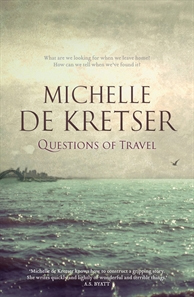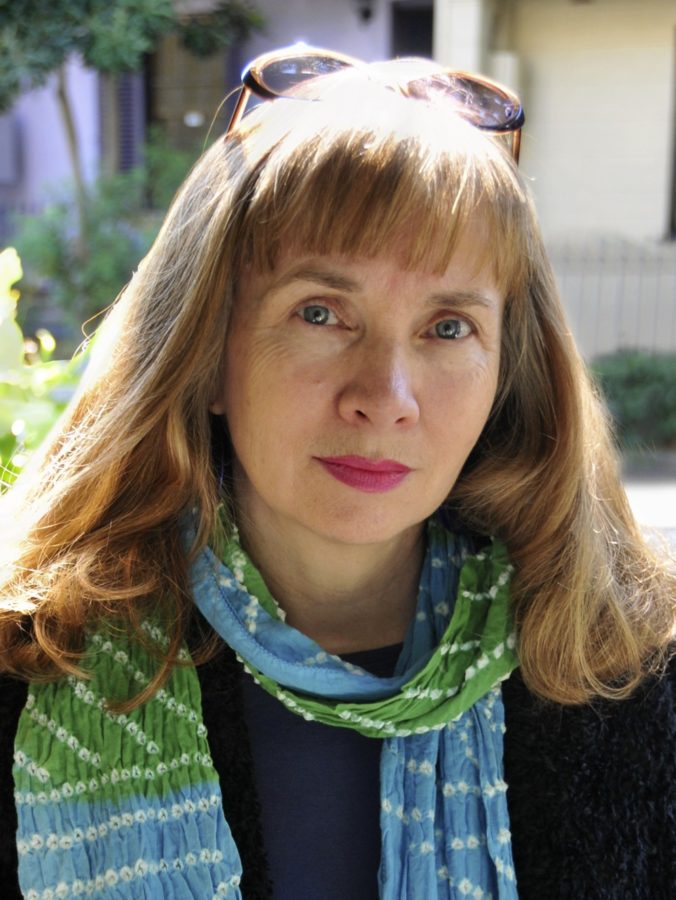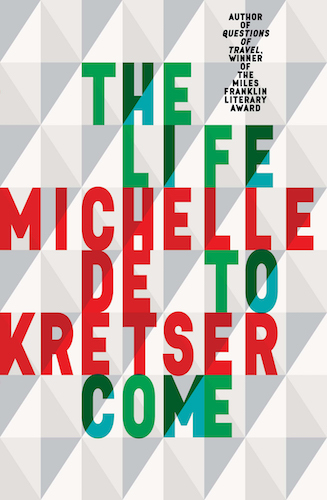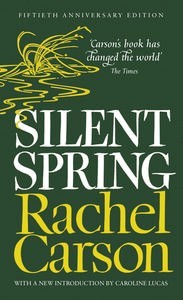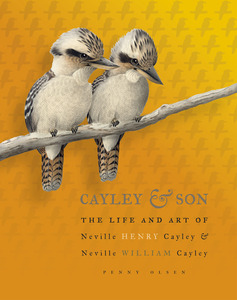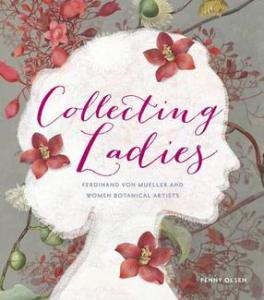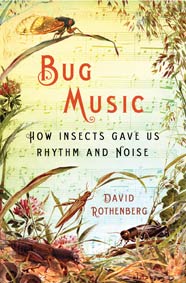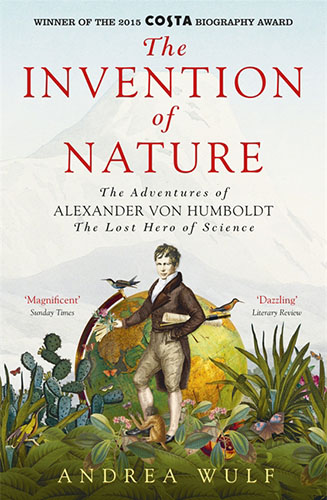Tripped up, tripped out: Questions of Travel by Michelle de Kretser
From 1983 until 2009, Sri Lankans were involved in or endured a brutal civil war. Between 60 000 and 100 000 people died. During the escalated carnage and human rights abuses of the last months of the war, between 10 000 and 40 000 people were killed, most of them civilians. In 2004, a tsunami devastated the island, killing over 35 000 people. As a result of both catastrophes, large numbers of people were left injured, displaced and traumatised, or have disappeared without trace. Recent investigations, including eyewitness accounts in books like Frances Harrison’s Still Counting the Dead (2012), suggest Sri Lanka is a country still suffering, where the full truth remains to be told and acknowledged.
In 2012, more than 5700 Sri Lankan refugees sought asylum in Australia. Those who risked their lives making the trip by boat and arriving illegally were taken to detention facilities like the one on the Australian territory of Christmas Island. Many are being returned to Sri Lanka.
That’s one set of realities. The other is our global culture of leisure and travel, which prefers to sideline or ignore all of the above. An official Sri Lankan tourism website invites us to select our favourite destinations by clicking on Pristine, Heritage, Thrills, Wild, Bliss, Scenic, Essence or Festive. And recently an Australian newspaper announced, ‘Move over Bali, Sri Lanka is the new hot spot.’ Titled ‘Wonder land’, the article starts by mentioning the war and reassures us that ‘those days are finally and thankfully gone, with Sri Lanka bouncing back’; it then gives a ‘beginner’s guide’ to the island’s extraordinary natural beauty and complex history.
This dichotomy – of tourism in troubled places – is at the core of Questions of Travel. Its Australian author Michelle de Kretser, who was born in Sri Lanka, takes us quite happily to Heritage or Thrills, anywhere in the world – to ‘St Petersburg, Jaipur, Ljubljana. Hill trekking in Thailand, a weekend in an abbey on the Isle of Wight’ – but along the way shows us an extra thing or two. Like a taxi-ride that keeps pace with an open-sided truck in Singapore, which is ‘transporting guest workers to and from a building site … One of the dark-skinned men … asleep on a pile of bricks.’
Applied to de Kretser’s work, ‘along the way’ is no idle phrase. A novel about the politics and philosophy of travel, Questions of Travel is also a highly digressive text which, in its waywardness, discards a causal chain of events; it insists on its ‘right to interrupt the narration’ and to challenge ‘the despotism of “Story”’ (as Milan Kundera put it). It is a playful, performative, unsettled and often extremely unsettling narrative, which charts its own fantastic-realistic course. There are many departures from the main line, each detour creating suspense about where we are being taken and how to describe this labyrinth of pathways.
I’d jotted my first impressions randomly on the flyleaf. I’d noted the social satire. The wicked humour of the narrator’s voice. An ever-growing cast of characters. Oddballs. Their gestures. Much is made of mimicry and surfaces and visual thinking. Minutiae and exaggerations, harmlessness and pain, sit side by side. Horror. Juxtaposed fragments and tableaux in an expansive frame. The book had me scrambling for its entry points.
In a recent interview, de Kretser said, ‘I like three-dimensional novels that are like walking down a corridor and you find a niche in the wall or a door might be open and you can go into a room or peer in, and sometimes the door is closed but you know there is a space in there.’ Reading her work is an experience just like that.
Good novels offer more than one gambit. And Questions of Travel gives us several. Gambit: an opening at chess, from the Italian gambetto, or tripping up; related to gambol. And if chess is a form of travel, of territory crossed and transformed with colonial intentions, with losses and gains and diversions, then in this book there is something of that game and its double narration, played out on a black and white chequerboard floor. But imagination – the author’s, the reader’s – keeps lifting it off the grid into another sphere, ruled by mood and memory, lit by colours, orange, ruby, purple, mulberry, blue, and ‘the wild romance of jacaranda trees’.
Across that chequerboard and through those trees, there are glimpses of a loose chain of adventures, barely a plot. Protagonists are compelled, for different reasons, to keep moving. There is satire, excess … the picaresque. I’m not suggesting that Thomas Nashe’s The Unfortunate Traveller (1594), Jonathan Swift’s Gulliver’s Travels (1726) or Laurence Sterne’s A Sentimental Journey (1768), for example – or the work of Lewis Carroll, Joseph Furphy, Patrick Süskind or Aravind Adiga – were direct sources for de Kretser’s novel. It’s just that recognising their kinship, and keeping them in mind, has guided my reading of the book.
Kinship is a pivotal theme of the picaresque. As a travel genre, it draws on our heightened sensitivity to likeness and difference – us and them – while we are en route in foreign places, or experiencing alienation or wonder in places we call home. Questions of travel, then, are questions of authenticity: of consanguinity and camouflage, of mimesis and alterity. They’re also literary questions.
And so Swift made a show of declaring his affinities, by opening Gulliver’s Travels with a (fictional) letter from the publisher to the reader, claiming that ‘the author of these Travels, Mr Lemuel Gulliver, is my ancient and intimate friend; there is likewise some relation between us by the mother’s side.’ Further to impress, he said he gave editorial advice to a cousin, the explorer William Dampier, on how to improve his book A New Voyage Round the World (1697). Dampier adds kudos to this lineage, as he was the earliest English explorer of parts of the Australian coast and the rescuer of Alexander Selkirk (who was the inspiration for Daniel Defoe’s Robinson Crusoe). Swift then had Gulliver report he was ‘driven by a violent storm to the north-east of Van Diemen’s Land’ and ‘pushed forward by wind and tide’ until he reached Lilliput, where he ‘gets safe on shore’. He even provided a map, showing Lilliput as an island south of Sumatra (approximately where Christmas Island is located). Cartographical fancies, helped by the fact that most of Australia had not been discovered.
And in A Sentimental Journey, comparing the familiar and the foreign and displaying his discernment, Sterne’s protagonist Mr Yorick famously observed: ‘They order, said I, this matter better in France’ – and set off on his author’s mission ‘to teach us to love the world and our fellow creatures better than we do’. Virginia Woolf, a keen writer on travel – she called her first novel The Voyage Out (1915) – said of Yorick that ‘his chief adventures were not with brigands and precipices but with the emotions of his own heart.’ She plotted the same kind of itinerary for her hero(ine) Orlando, because the link between travel, writing and feelings was a subject close to her heart too. Her essay on Sterne and her novel Orlando were written around the same time: both were published in 1928. She said she had planned the novel ‘as an escapade; the spirit to be satiric, the structure wild.’ Woolf was one of many of her generation of writers who recognised in Sterne’s digressive style their own modernist windings, florescences and silences, and she declared him to be ‘singularly of our own age’ – of her age, as he is of ours, another century later. This is the kind of literary history implicit in Questions of Travel, a work that knows its genealogy. As a contemporary picaresque novel, it is also a parody and in many ways a refashioning of that pliable genre, which de Kretser has interwoven with modern, postmodern, baroque and gothic threads.
If you are undemanding, you can enjoy Questions of Travel as a good, rich read. But I kept stopping to catch my breath and admire or interrogate the text; it was quite a ride. Reaching page 515, and seeing beyond it nothing but the Permissions and Acknowledgements pages – and, rather alarmingly, a grey sea printed across the endpapers like Doomsday – I came out of the book’s theatre a bit rattled, tripped up, tripped out. I’d been shocked and disturbed, had fun, relished the eccentric beauty and the mischief of it all, the roguish tone; the notions that Sydney is ‘the kind of place where you see orange lipstick non-ironically’, that Paris is someone’s ‘reward for irregular verbs committed to memory’, that protea flowers are crimson mallets, that a bald man is a reckless turtle.
It’s not easy to accommodate rhythms of tragedy and comedy in one book. De Kretser succeeds. In the end, I was most affected by the novel’s darker implications and felt rather sad. Cervantes, progenitor of the picaresque – which despite its rollicking is essentially a melancholy genre – understood that ‘so long as the game lasts, each piece has its own particular significance, and when the game is finished they are all mixed, jumbled up and shaken together, and stowed away in the bag, which is much like ending life in the grave.’ It was hard to know, on the last pages of Questions of Travel, if the two final images, the black tidal wave and ‘the white and storeyed’ (i.e. storied) harbourside mansion ‘with a view of water from every room’ – black and white, fact and fiction – signify an impending collective grave, or a collective dream within a dream. Checkmate or stalemate or something mundane. Picaresque tales don’t really end. I thought the characters might keep swimming ‘as Fortune directed’, like Gulliver and Orlando and others, and wash up on new shores.
*
‘When Laura was two, the twins decided to kill her.’
That’s the book’s first sentence, and we register a dysfunctional though probably all-too-ordinary family. Laura Fraser’s older brothers equate her birth with their mother’s death and plan to drown her. ‘No one could say how the safety catch on the swimming-pool gate had come undone; the twins, questioned, had blank, golden faces.’ In the brief moment between being underwater and being saved by her aunt Hester, Laura starts to hatch into awareness, and ‘once or twice a year, as long as she lived’, she had ‘the water dream’, when ‘separate things ran together and were one thing’, when she ‘was held and set free’. This dream serves the narrative as both memory and prophecy.
Laura is raised by Hester and is enchanted with her aunt’s real and made-up travel stories, which are linked to a collection of souvenirs: a Venetian bead, a Spanish doll, postcards, photos, menus, tickets, remnants of an earlier life. ‘After talking about her travels, Hester was often restless.’ And Laura grows up to become even more footloose and promiscuous than her aunt had been. To indulge her obsession, she works as a travel writer. She is the novel’s picara: an independent and itinerant type of literary heroine – bold, bright, hungry, a bit awkward, and not completely in charge of her fate – descended from Defoe’s Moll Flanders, Thackeray’s Becky Sharp, Carroll’s Alice, Woolf’s Orlando, White’s Theodora Goodman. At one stage of her wanderings, Laura carries a paperback of The Aunt’s Story (1948) in her coat pocket, and explains to a fellow traveller that she was on a pilgrimage to Saint-Jean-de-Luz ‘because Patrick White had written one novel in the town and drawn on it for another’. With Whitean grotesquerie, de Kretser lets her heroine say this while ‘stuffing her face’ with a warm and greasy pain au chocolat. An image in The Aunt’s Story of the earth as ‘a capsule waiting for some gigantic event to swallow it down’ might well have featured in Laura’s water dream.
But it’s not all about Laura. Soon after introducing her, the narrative cuts from 1970s Sydney to another opening: the same period in the life of a boy called Ravi Mendise, whose home is a town not far from Colombo on the west coast of Sri Lanka, ‘where the sea tugged patiently at the land’ and ‘the baroque flourish of its colonial churches threw tourists into confusion’. For Ravi, the sea is ‘the sound behind all other sounds’.
As simultaneous protagonists from different backgrounds, Laura and Ravi have no apparent connection, except – for different reasons – their feelings for water and their wish to travel. Their fragments of stories are told in separate sets of alternating chapters. The puzzle of their non-relationship keeps us looking for a piece still missing.
Laura and Ravi strive to discover where they belong. Laura thinks of herself as ‘the repository of all that was massive and defective in her father’s lineage’. Gulliver-like she is ‘a huge stranger’ in India, experiences ‘childlike wonderings in Rome’, and comes to the conclusion ‘that the old world [is] a backward sort of place’. Ravi grows up ‘in a lane crammed with life and food, where foreigners sometimes strayed … by mistake’. He becomes an IT specialist, and while living with the horrors of a war-torn place, he dreams of Silicon Valley. He has to flee when his wife Malini and their son are murdered, Malini for her political activism. In a distressing set of circumstances that include an exchange of sexual favours, he obtains a temporary visa to Australia. On arrival ‘everything bore the glaze of strangeness’ and his ‘brain held nothing but details of the wrong kind’. One of his hardest lessons is to realise that in Australia, Sri Lankans are undifferentiated: ‘Burgher, Sinhalese, surgeon, sweeper, it was all the same. Immigration was the triumph of geography over history.’
Grieving for his wife and child, Ravi rambles across Sydney. ‘Walking is a porous activity: the outside seeps in. By the end of that summer, Australia had entered Ravi. Now it would keep him company no matter where in the world he went.’ He gets work, makes friends. But even as he is going through the legal process to be allowed to stay, he is not sure. After their mother’s death, one of his sisters suggests that should sell their old house. ‘Ravi saw strange faces at the windows, rooms ripped open, the mulberry on its knees before an axe.’ They reach a compromise and find some tenants.
In The Postcolonial Citizen (2010), discussing ‘the rhetoric of repetition and disjuncture that is tied closely to displacements and travel’, Reshmi Dutt-Ballerstadt points out what migrants know instinctively: that it is not possible ‘to turn back and return fully to what is called one’s homeland in the hope of reconciling one’s displaced authenticity’.
Although de Kretser does not insist on a significant relationship between Laura and Ravi, her novel brings them together incidentally by having them work at the same publishing house. They’re not friends but sometimes run into each other in the car park. Ravi enjoys these chance encounters, because he thinks Laura ‘might say something that changed the look of the day’. But when she tells him she is planning a trip to Sri Lanka and shows her ignorance of the island, he has ‘a vision of a horde. It ate, loved, frolicked unthinkingly; at its head strode Laura Fraser. He saw the rooms of childhood forced open, despoiled, laid bare to the light. She loomed over him, sly and suggestive, and – I’d like to kill you, he thought.’ And of course the reader knows what the author knows: that he is not the first person who has wanted to kill her. Geographically, socially and emotionally, Ravi and Laura define separate and sometimes converging circles, where they become the touchstones of other lives, friends, family, lovers and acquaintances, all of whom, in different ways, face questions of intimacy and distance, of leaving and going home.
The novel shifts towards revealing the weight of certain decisions, like Ravi’s at the end of 2004 to return to Sri Lanka, despite the dangers, and Laura’s to go there at the same time for a holiday. Similarly, it releases the tragic irony of certain images – land tugged by sea, tourists thrown into confusion – which at first seem merely writerly and pleasing, but hold other levels of meaning. De Kretser places both Laura and Ravi in Sri Lanka at 9.20am on 26 December 2004, when the tsunami struck. We don’t know what happens to them because the book ends. We must draw our own conclusions based on what we remember of news reports and images of the colossal impact of that event caused by an earthquake that occurred a thousand miles away. The dead included tourists.
Questions of Travel is a book about travel of all kinds: colonial expansion and its postcolonial manifestations, migration, exile, tourism. And if language, like water, is a medium – a middle ground – the book maps the mobility of meanings: how language is intended or disrupted, how it hits or misses its mark, how it travels and transforms in different contexts. Like bees to nectar, we – the tourist-like readers – blithely enter the book’s baroque flourishes. We move along, past snapshots and gestures, through decades and suburbs, towards a global panorama. It is not just Laura and Ravi, ‘hooked into histories that ran back and forth across the globe’, who are itinerant, but de Kretser’s language and narration, which strays and lingers and juggles and confronts. Her Atlantic Ocean is ‘slow as a slattern that smears its grey rags along the shore’. Her people succumb to chicken parmigiana and to sex. There are giant burps and tiny penises. ‘Surfers with eyes like blue fish.’ Decisions like betrayals. Death is said to ‘run in families’. Sydney ‘squinted over its brown back at Africa, at India.’ In Melbourne, the balloon-like faces of people dressed in black float down laneways. Someone speaks harshly to a child, like a person ‘snapping off the lights’ in a house. A privileged child called Destiny shows her true deceptiveness. Meanings surface. We find out who has been calling Laura anonymously all her adult life. Symbols form. Ravi’s grief for his family becomes trapped in the horror of seeing his wife Malini’s dismembered body, which afterwards he remembers as the shape of a vase. Small things, including children, but also flowers, stones, names, trivia, toys – like the lost toy viewfinder that once belonged to Ravi’s son – carry visceral connotations. As Robert Dessaix suggested a few years ago in a radio interview, de Kretser’s metaphors can make you anxious. You are being pushed to keep adjusting your own viewfinder.
De Kretser’s first novel was The Rose Grower (1999), set during the French Revolution; her second was The Hamilton Case (2003), set in 1930s Ceylon. From these we know how finely she layers fact and fiction, history and psychology, ideas. As James Ley emphasised in his review of her third novel The Lost Dog (2007), she is also a superb stylist. These qualities have been honed to strike even further in Questions of Travel.
The work of contemporary Australian women novelists is immensely varied and on the high ground of literary fiction they have all pitched their tents some distance from each other: it’s not really a sisterhood phenomenon, not exactly Christine de Pizan’s City of Ladies, or Elizabeth Gaskell’s Cranford. Occupying the heights with de Kretser are Delia Falconer, Helen Garner, Elizabeth Harrower, Gail Jones, Mireille Juchau, Antigone Kefala, Julia Leigh, Gillian Mears, Drusilla Modjeska, and Alexis Wright. Their books are moving, cutting, smart, poetic, powerful, personal, but few are as inherently political as Questions of Travel. By the term ‘literary fiction’ I also mean these women’s books convey an overarching narrative intelligence: there is a sense that they began as readers, and from that base have become writers, with a keen awareness of language, of genre, how novels work and especially how the author identifies herself in relation to her narrative and her readers. Like Harrower’s heroine (also called Laura), who ‘could not make her feet stop walking’, interminably, between Sydney’s Circular Quay and Central Station, along Pitt, Elizabeth, Hunter, King and Market Streets, these women authors and their characters – driving, walking, cycling, climbing, flying, riding, sailing, migrating, adventuring, self-seeking, trespassing – are a restless lot. Despite their differences, they would recognise parts of themselves and each other in the mirror – and in the discussions – of de Kretser’s Questions of Travel.
Works Cited
Keith Austin, ‘Wonder land,’ ‘Travel’, Sun-Herald (6 January 2013).
Miguel de Cervantes, Don Quixote, translated by John Ormsby (Norton, 1981)
Reshmi Dutt-Ballerstadt, The Post-colonial Citizen (Peter Lang, 2010).
Delia Falconer, ‘The Hamilton Case’, Sydney Morning Herald (18 April 2003).
Frances Harrison, Still Counting the Dead: Survivors of Sri Lanka’s Hidden War (Portobello Books, 2012).
Elizabeth Harrower, The Watchtower (Macmillan, 1966)
Evelyn Juers, ‘She Wanders’, Heat 15, First series (2000).
Anne K. Kaler, The Picara: From Hera to Fantasy Heroine (Popular Press, 1991).
Milan Kundera, The Curtain: An essay in seven parts (Picador, 2006).
James Ley, ‘Off the leash with irony’, The Age (3 December 2007).
Laurence Sterne, A Sentimental Journey (Oxford, 2008).
Jonathan Swift, Gulliver’s Travels (Norton, 2001).
Michael Taussig, Mimesis and Alterity (Routledge, 1992).
Patrick White, The Aunt’s Story (Viking, 1948).
Virginia Woolf, ‘The Sentimental Journey’, The Common Reader: Second Series (Hogarth Press, 1932);
Virginia Woolf, Orlando (Hogarth Press, 1928).
Virginia Woolf, The Diary of Virginia Woolf, Volume 3:1925-30 (Harcourt Brace Jovanovich, 1980)
Susan Wyndham, ‘The Interview: Michelle de Kretser’, Sydney Morning Herald (6 October 2012).
